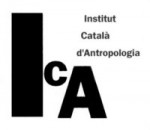7-10 NOVEMBRE 2012
Facultat de Geografia i Història - Universitat de Barcelona
Dimecres 7/11/2012
Dijous 8/11/2012
Divendres 9/11/2012
Dissabte 10/11/2012
Neighbourhood of Mouraria, Territory of Super Diversity: Between Conviviality and Tension
Sociologist and Assistant Professor at Faculty of Architecture, Centro de Investigação e Estudos de Sociologia (mamendesster@gmail.com)
Abstract
This text has as a basis a wider research that is still in course, which deals with cultures of conviviality and super diversity, its conceptual matrix lying on the theoretical proposals developed by P. Gilroy and S. Vertovec. Here we try to discuss some preliminary results obtained from the field research carried out in the Mouraria neighbourhood in Lisbon, which was based on the use of empirical material resulting from the mobilization of a methodological strategy of predominantly qualitative tendency, focused on the observation of public spaces and events between 2010 and 2011. Bearing in mind that diversity may be conceived as a factor of differentiation, as well as of attractiveness or even that generates cosmopolitanism, we propose to emphasize here some analysis dimensions associated with super diversity (new conjunctions and interactions between variables). Indeed, this territory has become an attractive place for the settlement of foreigners in our country; however, it is important to notice that the visibility of some immigrant and ethnic groups in this territory contrasts with the invisibility of others. As Mouraria is located in the ancient part of the city of Lisbon, it seems to be progressively turning into an “urban ethnic place”, and it is worth emphasizing some disjunctions which will be analysed here and which have marked the speeches and the policies concerning this area: typical and historical neighbourhood versus cosmopolitan neighbourhood; exotic neighbourhood versus infamous neighbourhood; neighbourhood for immigrants/foreigners versus neighbourhood for autochthonous people. This contribution aims precisely at problematizing the main changes in course in this Lisbon neighbourhood and carry on with some research and interpretation lines which will contribute to a reflection about the processes of social construction of public images about Mouraria, which have led some of the practices and policies concerning the socio-territorial intervention in this neighbourhood.





